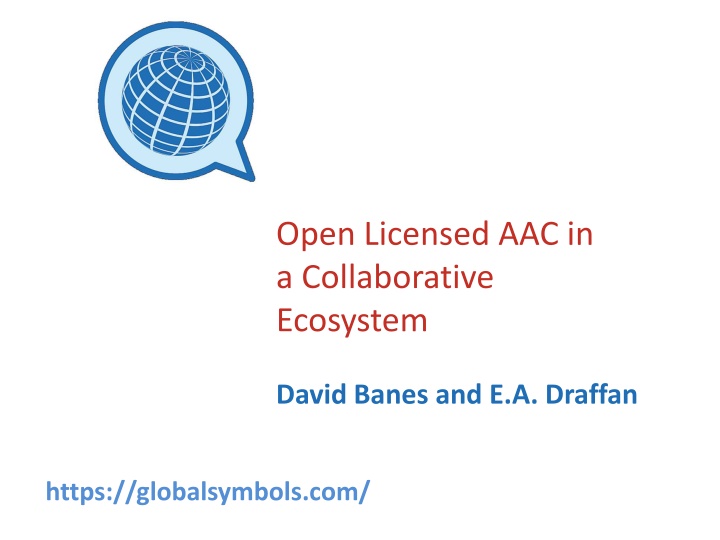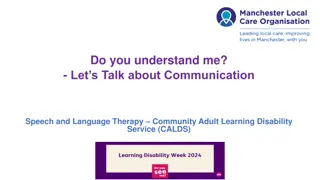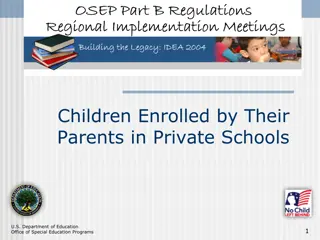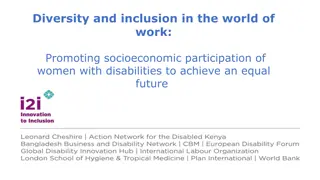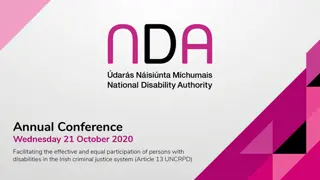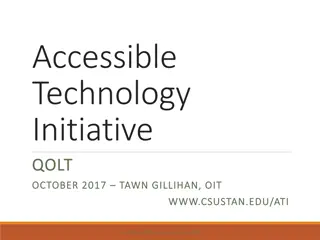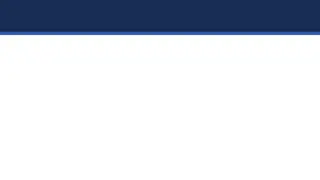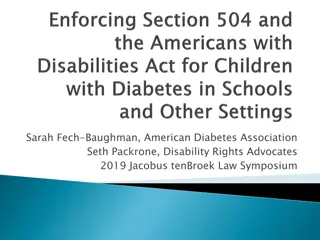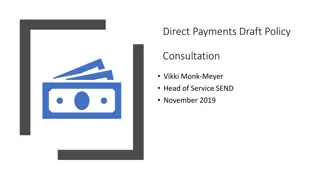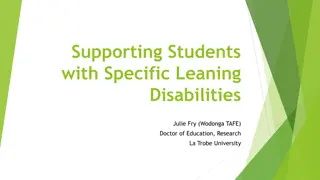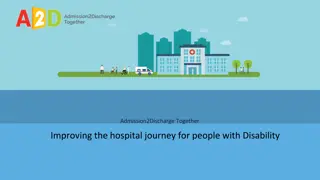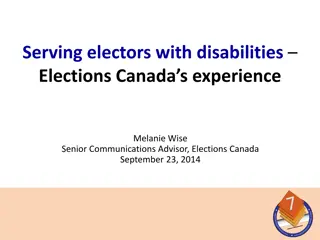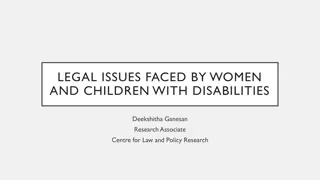Enhancing Accessible Communication Systems for Children with Disabilities
The content explores the significance of adopting open-licensed Augmentative and Alternative Communication (AAC) solutions in fostering early inclusion for children with communication-related disabilities. It highlights the challenges faced in developing technology-based solutions and the need to enhance professionals' skills to support AAC implementation. The key objectives involve improving availability of customizable AAC solutions, enhancing professionals' capacity, and shifting towards a social model of disability. The implementation framework covers stakeholder identification, symbol selection, capacity development, and long-term support for families.
Download Presentation

Please find below an Image/Link to download the presentation.
The content on the website is provided AS IS for your information and personal use only. It may not be sold, licensed, or shared on other websites without obtaining consent from the author.If you encounter any issues during the download, it is possible that the publisher has removed the file from their server.
You are allowed to download the files provided on this website for personal or commercial use, subject to the condition that they are used lawfully. All files are the property of their respective owners.
The content on the website is provided AS IS for your information and personal use only. It may not be sold, licensed, or shared on other websites without obtaining consent from the author.
E N D
Presentation Transcript
Open Licensed AAC in a Collaborative Ecosystem David Banes and E.A. Draffan https://globalsymbols.com/
2 UNICEF Regional Office for Europe and Central Asia (ECARO) - Background Relevance of AAC Out of 240 million children with disabilities in the world, 20 million have communication related disabilities (due to CP, Autism, Trauma); 4 million children in need are 2-4 years old Language, communication and interaction are foundational for school education and are formed in the early years when the brain is developing rapidly Early intervention is both more effective and less costly than later remediation Challenges Technology-based solutions for communication challenges are unknown, extremely expensive, unavailable in the regional languages, and there are very few local developers Many professionals do not have the required knowledge and skills to support children and parents with Assistive Technologies. Limited formal training or university courses available Widespread myths and prejudices
3 Key Objectives Improve availability of open source, customizable, AT/AAC solutions Improve capacity of professionals to support early inclusion of children with AAC solutions Support shift from medical to social model of disability Nurture partnerships and capacity that can build sustainable national AT/AAC ecosystems
4 Implementation Rationale and Conceptual Framework 1. Defining Scope and Stakeholders 2. Making Symbol Choices 3. Capacity Development 4. AAC Symbol Set Design 5. Introducing Tech AAC 6. AAC Application Use 7. Supporting Families 8. Appreciating Long Term Results
5 Defining Scope and Stakeholders Starting Point what resources and expertise are already available? Identifying a core partner Identify stakeholders Identify international partner Establish core project and partners Associate stakeholders with activities Develop a project plan
6 Making Symbol Choices Creating an AAC forum Choosing a symbol set Language and vocabularies - defining a core vocabulary Selection of new symbols for design Development of symbols by local graphic designer Voting on newly designed symbols Publishing the new symbol set with language translations Integration of the new symbol set with AAC applications (Cboard)
7 Capacity Development Selection of participants and skills audit Planning training delivery Mapping skills audit outcomes to training content Development and adaptation of training materials Training material considerations Mentoring Training evaluation
8 AAC Symbol Set Design Symbol types Cultural nuances seen in symbols Cultural appropriateness at different levels Co-production and participatory design Practicalities of symbol design Symbol set schemas
9 Introducing Tech AAC Different levels of AAC Tech - different technologies for different - adding access technology to AAC devices. AAC vocabularies and communication boards Introduction to Board Builder/Symbol Creator Open design and development
10 AAC Application Use Introduction to Cboard Text to speech solutions and different languages Interface localisation where translations are needed. Establishing local testing processes AAC Forum providing feedback and evaluation as ongoing processes - Surveys & Psychosocial Impact of Assistive Devices Scale (PIADS)
11 Supporting Families Understanding needs of families and carers Early intervention strategies at home Family and carer involvement Plan for progression Thanks to UNICEF Montenegro / Du koMiljani / 2020 Bojana and her sister Marija using C-board application which makes communication easier for children with disabilities, in Cetinje, in July 2020.
12 Appreciating Long Term Results Countries involved with the UNICEF A Voice for Every Child programme after two years results included: Increased awareness on the value of AAC/AT Strengthened national coalitions for AAC/AT to support use and availability of affordable AAC solutions Strengthened collaboration between global and national experts and universities University courses and continuous professional development opportunities related to AAC AT available National resource centers for AAC AT support Professionals (preschool teachers, psychologists, speech and language specialists) use modern methods and means in line with the social model of disability Centers of excellence support national design and development of AT solutions Markets shaped to improve accessibility and affordability of AT solutions
Thank you David Banes and E.A. Draffan https://globalsymbols.com/knowledge-base Thank you also to UNICEF, colleagues and participants in Croatia, Serbia and Montenegro, plus symbol developers including ARASAAC, Tawasol, Mulberry, Jellow and Sclera.
